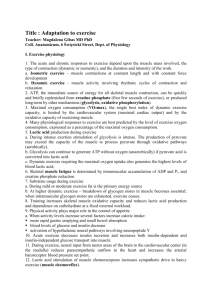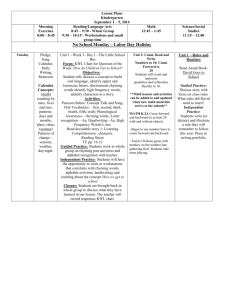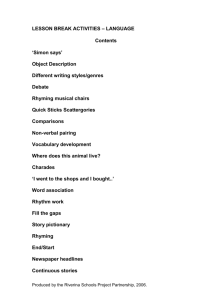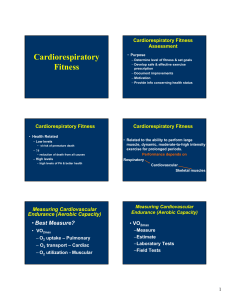Astrand & Rhyming Submaximal Test
advertisement
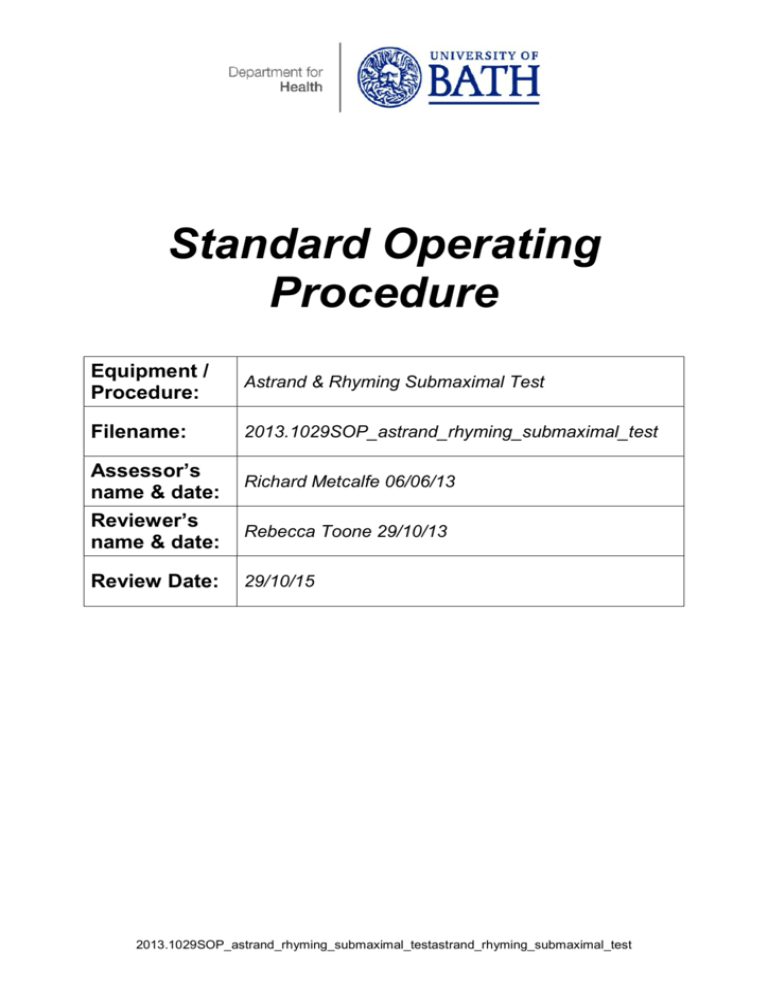
Standard Operating Procedure Equipment / Procedure: Astrand & Rhyming Submaximal Test Filename: 2013.1029SOP_astrand_rhyming_submaximal_test Assessor’s name & date: Reviewer’s name & date: Review Date: Richard Metcalfe 06/06/13 Rebecca Toone 29/10/13 29/10/15 2013.1029SOP_astrand_rhyming_submaximal_testastrand_rhyming_submaximal_test Astrand & Rhyming Submaximal Test Safety Information: Before the test each participant should complete a consent form If the participant is feeling unwell, they should not exercise Please ensure you have read the following Risk Assessment/s before using this equipment or undertaking the following task/s: o 2013.0718RA_exercise_ergometry o 2013.0910RA_monark_cycle_ergometer_handling o 2013.0124RA_srm_and_monark_cycle_ergometers General Operation: This test helps you to predict VO2max from work intensity and heart rate using method described by Astrand & Rhyming (1954). The information contained in this package and the data, which you collect during the sub-maximal test, will allow you to predict VO2max for participants between the ages of 15 and 65 years. Protocol: 1. Ensure that the participant has not eaten within the past hour. 2. Weigh the participant and record weight on the form. The participant should wear light clothing and appropriate training shoes. 3. Put on a Polar Heart Rate Monitor and check that a signal is being received. 2013.1029SOP_astrand_rhyming_submaximal_testastrand_rhyming_submaximal_test 4. Adjust the saddle height to suit the subject. There should only be a slight bend in the leg with the pedal fully down. 5. Set an appropriate initial work load. This should be 60 watts for women (just the basket) and 90 watts for men (basket + 0.5 kg). Ask the participant to cycle at 60 rpm. 6. The participant then cycles at this workload for 6 minutes. Record to the heart rate at 5 minutes and 6 minutes. a. If the mean heart rate is between 125 and 170 beats per minute, the test can be terminated. b. If the mean heart rate is less than 125 beats per minute, increase the work load by 30 watts (0.5 kg) and continue the test for a further 3 minutes. c. If the mean heart rate between minutes 8 and 9 is between 125 and 170 beats per minute, the test can be terminated, and so on… 7. At the end allow the subject to keep pedalling at an easy pace with the load removed from the ergometer, for about one minute. 8. If the heart rate exceeds the values shown in table 2 at any point, the test should be terminated. 9. You can then read the predicted VO2max from the nomogram shown in figure 1. To do this, draw a line between the appropriate points on the heart rate and work rate scales (make sure you use the correct scales for males and females!). Determine where the line intersects the VO2max scale and apply the appropriate age correction factor (shown on the nomogram). 2013.1029SOP_astrand_rhyming_submaximal_testastrand_rhyming_submaximal_test Table 1 - Guidelines for maximal heart rates that should be reached during the Astrand test Age 20 25 30 35 40 45 50 55 60 65 Predicted Max. H.R. 200 195 190 185 180 175 170 165 160 155 H.R. Max. for Test 170 165 160 155 150 145 140 135 130 130 2013.1029SOP_astrand_rhyming_submaximal_testastrand_rhyming_submaximal_test Figure 1 Astrand Rhyming predictive nomogram End of Document 2013.1029SOP_astrand_rhyming_submaximal_testastrand_rhyming_submaximal_test


